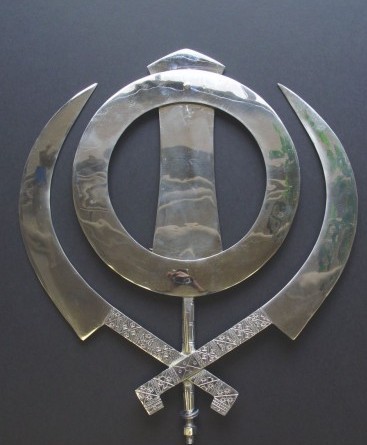Several other dancing postures of Siva like Anandatandava-murti, Uma-tandava-murti, Tripura-tandava-murti, and Urdhva-tandava-murti are also mentioned in the Agamas.
Siva is as great a master of Yoga and spiritual sciences as he is of music, dancing and other arts. As a universal teacher he is called Daksinamurti. Since Siva was seated facing south (daksina=south) when he taught the sages in a secluded spot on the Himalayas, he is called Daksinamurti. He has three eyes and four arms and one of the legs is trampling upon the Apasmarapurusa. Two of the arms (the front right and the front left) are in Jnanamudra and Varadamudra poses (showing the imparting of knowledge and bestowing of gifts). The back hands hold the Aksamala (rosary) and, either fire or serpent. He is the very model of the perfect Guru. He is surrounded by several Rsis eager to learn Atmavidya (Self-knowledge) from him.
Siva is said to have appeared as a blazing pillar of fire, of immeasurable size, to destroy the pride of Brahma and Visnu. Lingodhbavamurti depicts him as manifesting in the heart of the Linga. The image has four arms. Brahma and Visnu stand on either side adoring him.
The Bhiksatanamurti shows Siva as a naked Bhairava, begging his food in the skull cup. It is almost the same as the Kankalamurti.
The Haryardha-murti, also called as Hari-hara and Sankaranarayana, has Siva on the right half and Visnu on the left. A fusion of these two aspects into one god is an obvious attempt at a happy reconciliation of the warring cults of Siva and Visnu.
The Ardhanarisvara (half man and half woman) form with Parvati as the left half represents the bipolar nature of the created world and hence the need to look upon woman as equal and complementary to man.
MINOR DEITIES ASSOCIATED WITH SHIVA
There can be no Siva temple without Nandi, the recumbent bull placed in front of the shrine. Nandi or Nandikesvara may be depicted exactly like Siva-with three eyes and two hands holding the Parasu (battle axe) and Mrga (the antelope). But the other two hands are joined together in the Anjali pose (obeisance). More commonly he is shown as a bull-faced human being or just as a bull.
The Puranas describe him as born out of the right side of Visnu resembling Siva exactly and given as a son to the sage Salankayana who had practised severe austerities. Other versions describe him as the son of the sage Silada who got him by the grace of Siva.
Nandikdvara, also known as Adhikaranandi, is the head of the Ganas of Siva and also his Vabana (carrier vehicle).
Symbolically, the bull represents the animal intincts, especially the sex, and Siva’s riding on it reflects his absolute mastery over it.
Then comes Bhrngi, the sage, who was singularly devoted to Lord Siva, and was elevated to the retinue of Siva’s abode. The sage was so fanatical in his devotion to Siva that he did not care even for Parvati, his consort! When Parvati merged herself into the body of Siva and Siva thus became Ardhanarisvara, Bhrnga was still so bigoted that he became a Bhrnga (=bee) and bored through the centre of the Ardhanarisvara form to complete his circumambulation!Hence the name Bhrngi. Siva, of course, made him realise his mistake.
Virabhadra is another deity associated with Siva. He is the personification of Siva’s anger manifested during Daksa’s sacrifice because of the contemptuous treatment meted out to him. Siva is said to have created him out of a hair plucked out from his head. Virabhadra successfully destroyed Daksa’s sacrifice and humiliated all the gods who had assembled there. He is usually shown with three eyes and four arms holding bow, arrow, sword and mace. He wears a garland of skulls. The face is terrific. Bhadrakali, his counterpart created by Parvati, is sometimes shown by his side. Siva temples may have a small shrine dedicated to him, located usually in the south-east.
Next comes Candesvara, a human devotee raised to the status of a deity, by Lord Siva because of his intense devotion. He is a fierce deity holding weapons of war and destruction like the bow, arrow, trident, chisel, noose and so on. Though independent shrines dedicated to him are not uncommon, he is usually installed in every Siva temple in the north-eastern comer, facing south. Devotees believe that he can act as a messenger and mediator interceding with the Lord on behalf of the devotees. Hence supplication before him is a duty of every devotee visiting the Siva temples.
Other attendants of Siva are the Ganas, also known as Pramathaganas or Bhutaganas (demigods or malignant spirits). If they are not propitiated, they can do harm.





Be the first to comment